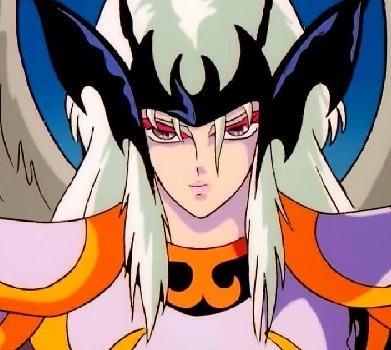Dive into the world of Saint Seiya and embark on a journey full of captivating characters, epic battles, and intricate storylines. What may surprise you is the presence of Christian references in this beloved anime series.
- The Saints: In Saint Seiya, “Saints” refer to Athena’s warriors. This term subtly alludes to Christian saints, emphasizing their moral virtues, courage, and dedication to justice.
- The Great Pope and Catholicism: The Great Pope in Saint Seiya, while using religious titles, does not directly represent the Catholic Church. It serves as a unique religious organization.
- Hyoga is a Christian: Hyoga’s faith in Saint Seiya is portrayed as a cultural element rather than a central theme, focusing more on his character’s backstory.
- Lucifer as a Villain: In a Saint Seiya movie, Lucifer’s presence alludes to Christian themes of rebellion and temptation, paralleling the eternal struggle between good and evil.
- Deus Ex Machina Moments: These moments in storytelling resemble divine interventions in biblical narratives, where unexpected miraculous resolutions occur to emphasize moral or spiritual significance.
- Saori: Athena and Virgin Mary: Saori, as the reincarnation of Athena, symbolically shares qualities with the Virgin Mary, representing compassion and guidance in their respective mythologies.
- Christian Ethics: Honor, Friendship, and Courage: In Saint Seiya, these values resonate with Christian ethics, highlighting universal virtues and their enduring relevance in storytelling.
- Hades’ Hell: In the Hades Saga, when Seiya and Shun reaches hell, they discover it is divided in circles, similar to Dante’s Inferno, a famous christian work.
1. The Saints
The term “Saints” used to refer to Athena’s warriors in the anime and manga series Saint Seiya carries a Christian reference. In Christianity, a “saint” is an individual recognized for exceptional holiness, often performing miracles or demonstrating unwavering faith.
These figures are venerated as intermediaries between humans and the divine. In Saint Seiya, the term “Saint” is employed to denote the elite warriors chosen by the goddess Athena to protect justice, peace, and humanity.
The Christian reference becomes evident in the moral and ethical principles upheld by the Saints, such as courage, self-sacrifice, and dedication to a noble cause. These values align with the virtues traditionally associated with Christian saints.
Additionally, the Saints’ battles against evil forces and their commitment to upholding justice draw parallels to the Christian concept of spiritual warfare and the struggle against sin and darkness.
This subtle incorporation of Christian terminology and themes adds depth and universal significance to the series, making it more than just a typical martial arts anime.
These Christian references enhance Saint Seiya‘s mythology. However, they are only used for artistic inspiration, not as a religious endorsement. Gaining new perspectives on how Christianity shapes the series can be an enriching experience. There are many references to astrology in the show too.
2. The Great Pope and Catholicism
The “Great Pope” is an antagonist character in the Sanctuary Arc of “Saint Seiya.” The Sanctuary Arc is a significant storyline within the series, where the main characters, the Bronze Saints, must navigate a series of challenges and battles to reach the sanctuary and confront the Twelve Gold Saints.
The Great Pope serves as the leader of the Sanctuary and is an important figure within the organization.
While the Great Pope might be associated with religious leadership due to the term “Pope,” his role and the organization he leads are not directly analogous to the Catholic Church or its hierarchy.
In “Saint Seiya,” the Sanctuary is an ancient and mystical organization that is dedicated to protecting the goddess Athena.
The terminology used, such as “Pope,” might have been chosen to evoke a sense of religious authority, but the series does not engage in direct commentary on the Catholic Church or Christianity.
These nods add depth to the narrative and prompt viewers to consider the interplay between mythology and religion. There are a lot of buddhist references in the show too.
3. Hyoga is a Christian
Hyoga, one of the main Bronze Saints, is from Russia and is often depicted as having Christian Orthodox cultural elements in his backstory.
While his beliefs are never deeply explored in the series, it’s mentioned that he prays for his deceased mother at a chapel in Asgard during the Asgard Arc.
His faith is portrayed more as a cultural touchpoint rather than a central theme of his character or the series. The series doesn’t extensively delve into religious aspects, and Hyoga’s faith is not a driving force in his interactions or battles.
For avid fans or those new to Saint Seiya, indulge in this world of mythology, spirituality and friendship. Let the cosmic battles ignite your imagination! There are many references to greek mythology in the show too.
4. Lucifer as a Villain
In the fourth Saint Seiya movie, titled “Saint Seiya: Warriors of the Final Holy Battle,” the presence of Lucifer as a villain is intriguing from a Christian reference perspective.
Lucifer, often associated with the fallen angel Satan in Christian theology, symbolizes rebellion and temptation. In this context, his inclusion in the movie adds a layer of moral and theological complexity to the storyline.
The clash between the Saint Seiya warriors and Lucifer parallels the eternal battle between good and evil, a central theme in Christianity.
Lucifer’s quest for power and dominion mirrors the biblical narrative of the fallen angel’s rebellion against God. By incorporating such a character, the movie explores the eternal struggle of light against darkness, highlighting the virtue of selflessness and the importance of resisting the allure of power.
This Christian reference in the movie adds depth and philosophical undertones, making it more than just a typical action-adventure anime, encouraging viewers to reflect on the timeless themes of morality and spiritual redemption.
5. Saori: Athena and Virgin Mary?
Saori Kido, the character in the Saint Seiya series who is the reincarnation of the Greek goddess Athena, possesses qualities that can symbolically evoke parallels with the Virgin Mary in Christianity. While these two figures originate from different mythologies, their roles and attributes share some common elements.
Firstly, both Saori and the Virgin Mary represent maternal figures of compassion and purity. Saori, as the embodiment of Athena, is associated with justice, wisdom, and protection.
Similarly, the Virgin Mary is a symbol of divine love, mercy, and intercession. Both figures inspire devotion and are regarded as protectors and guides for their respective followers.
Secondly, Saori’s role as a guiding and nurturing force for the “Saints” in Saint Seiya resembles the Virgin Mary’s guidance and support for believers in Christianity. They both play integral roles in the spiritual development and protection of their respective devotees.
While Saori is primarily a character within the context of Greek mythology, her character in Saint Seiya can be seen as a bridge between two cultural and religious perspectives, emphasizing the universal themes of divine guidance, compassion, and protection.
6. Deus Ex Machina Moments
Deus ex machina moments in literature, film, or other storytelling mediums refer to instances where an unexpected and seemingly miraculous resolution to a complex problem or conflict occurs. These moments can be paralleled with God’s intervention in biblical narratives.
In the Bible, there are numerous instances where God directly intervenes in the lives of individuals or in the course of significant events, often in a miraculous or unexpected manner.
Similarly, in storytelling, deus ex machina moments can involve divine or supernatural forces stepping in at critical points to resolve seemingly insurmountable challenges.
This reflects the biblical theme of divine providence and the idea that a higher power can guide the course of events to ensure a just or meaningful outcome.
These moments in literature or media serve to emphasize the idea of a higher, benevolent force at play, adding a layer of spiritual or moral significance to the narrative. They remind us of the enduring appeal of divine intervention as a storytelling device that echoes the age-old themes found in religious texts.
7. Christian Ethics: Honor, Friendship and Courage
In the context of the Saint Seiya series, which draws inspiration from various mythologies and cultures, concepts such as honor, friendship, and other virtuous values are prevalent themes that indirectly reference Christian ethics.
While Saint Seiya is primarily rooted in Greek mythology and Japanese storytelling traditions, its characters and plotlines often embody these universal virtues, reflecting their global appeal.
The honor upheld by the Saint Seiya warriors, who pledge their lives to protect justice and humanity, resonates with the Christian concept of living with integrity and righteousness.
Their unwavering friendship and loyalty to one another exemplify the idea of selfless love and mutual support, which aligns with the Christian principle of loving thy neighbor.
While not explicitly religious in nature, Saint Seiya’s portrayal of these values can be seen as a reflection of the universal appeal of moral and ethical principles that have been influenced, to some extent, by Christianity and other major world religions.
It’s a testament to the enduring significance of such values in storytelling and the human experience.
8. Dante’s Inferno in Saint Seiya
In the Saint Seiya: Hades Saga (Inferno), Seiya and Shun embark on a perilous journey through a passage inspired by Dante’s Inferno, a Christian masterpiece.
Marked by the ominous warning “Abandon all hope ye who enter here,” this traversal echoes Dante Alighieri’s descent into Hell. Shun is sad to read such words.
Notably, the Saint Seiya narrative parallels Dante’s work by depicting Hell as divided into circles. Much like Dante’s circles of sin, Seiya and Shun confront distinct challenges in each layer of Hell, reflecting the intricate moral framework and divine justice

